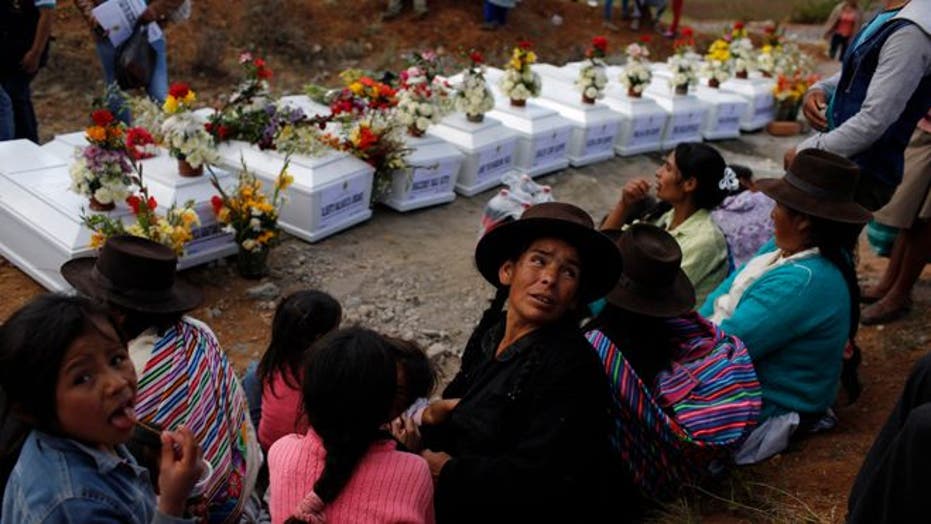VALLE ESMERALDA DE HUAYAO, Peru (AP) – More than two decades after they were massacred by Maoist-inspired insurgents during Peru's bloody civil conflict, 34 Andean villagers were finally given a proper burial.
Two trucks pulled up in the hamlet of Valle Esmeralda de Huayao carrying cardboard boxes with the victims' skeletal remains. In previous cases in the region, bereaved relatives had to travel to the regional capital, Huamanga, 40 miles (60 kilometers) away over a mountain pass, to receive remains.
Most villagers watched silently as forensic experts sorted the bones and placed them in government-donated white coffins during last week's proceedings. Women in colorful shawls lit candles and placed flowers beside the remains.
Margarita Yauri, 35, was moved to speak to the remains of her mother, Martina Aguilar: "Forgive me mother. When I was a girl I always disrespected you," she said in Quechua, her native tongue.
Musicians played melancholy songs typical of the region and evangelical pastors preached that the souls of the dead were finally with God, before the coffins were placed in a vertical grid of newly constructed cement tombs.
Following the massacre, they had been dumped together in a communal grave. After being identified by forensic anthropologists in Huamanga with the assistance of family members, the remains arrived last Wednesday. They were interred the next day.
At the ceremony, people sang a local anthem that spoke of the hardships of life in this rural town of 1,200 people, where 87 percent are poor, 33 percent illiterate and most young people lack jobs and depend on subsistence corn farming.
Afterward, they ate a communal meal of meat stew with potatoes and rice.
Nearly 100 students attended the ceremony on a field trip from the local school, named "Oct. 10" after the date of the massacre.
Survivors say that on that night in 1992, Shining Path guerrillas surrounded the town and slaughtered men, women, children and the elderly in revenge after locals rejected the rebels and formed a self-defense militia.
"There were so many gunshots, and they destroyed my home with two grenades. Inside they killed my father, my mother and five other people," said Demetrio Laurente, 39, who escaped just before the massacre and watched it take place from behind a row of alder trees.
The Shining Path movement battled Peruvian security forces and attacked civilian populations during the 1980-2000 conflict.
There was also the much smaller and less violent Tupac Amaru rebel group, of which U.S. activist Lori Berenson was convicted of collaborating.
A truth commission found that nearly 70,000 people perished in the conflict, with the Shining Path responsible for more than half the deaths and security forces blamed for roughly two in five.

